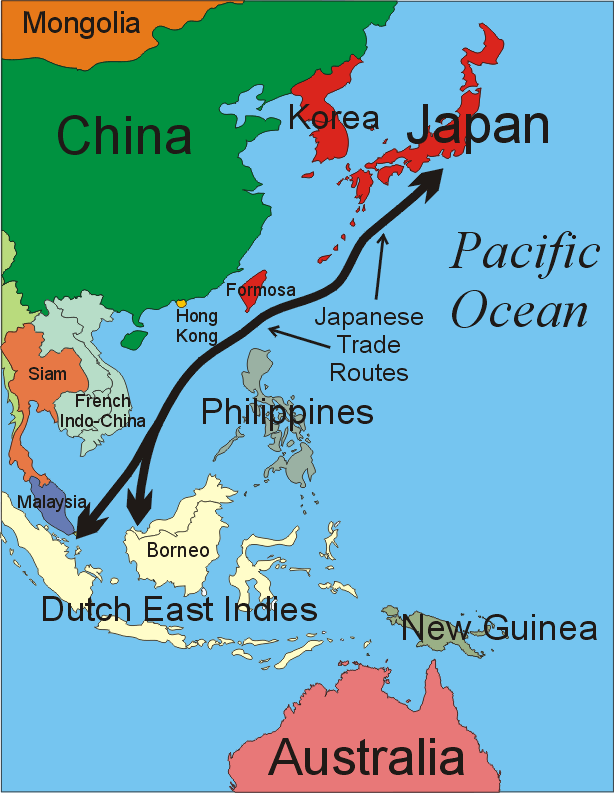|
A War of Supply and Logistics
 World War II was a conflict where each side struggled mightily to keep their respective supply lines open. In the European theater, the Battle of the Atlantic was a fight to the death between the Allies and the Nazis. The Germans almost succeeded in starving Great Britain into submission from the time they conquered France in 1940 until the summer of 1943. Then the Americans and the British brought overwhelming naval and air power into those areas of the Atlantic where Nazi U-boats had previously roamed unmolested. The tide turned when the sinkings of U-boats began to outnumber the losses of Allied shipping. An endless procession of convoys then traveled in relative safety, bringing troops, weapons, food, and supplies to the British Isles so the massive buildup for the invasion of Western Europe could maintain its frenetic pace. By the time the Allies landed on the Normandy Beaches on June 6, 1944, German U-boats ceased to be a serious threat. The German strategy of bringing Great Britain to its knees by starving the British people was a colossal strategic failure. World War II was a conflict where each side struggled mightily to keep their respective supply lines open. In the European theater, the Battle of the Atlantic was a fight to the death between the Allies and the Nazis. The Germans almost succeeded in starving Great Britain into submission from the time they conquered France in 1940 until the summer of 1943. Then the Americans and the British brought overwhelming naval and air power into those areas of the Atlantic where Nazi U-boats had previously roamed unmolested. The tide turned when the sinkings of U-boats began to outnumber the losses of Allied shipping. An endless procession of convoys then traveled in relative safety, bringing troops, weapons, food, and supplies to the British Isles so the massive buildup for the invasion of Western Europe could maintain its frenetic pace. By the time the Allies landed on the Normandy Beaches on June 6, 1944, German U-boats ceased to be a serious threat. The German strategy of bringing Great Britain to its knees by starving the British people was a colossal strategic failure. 
The massive struggle of keeping supply lines open in the Pacific was similar to the Battle of the Atlantic, but remarkably different in other significant ways. The Japanese did not use their submarines as their German allies had. To the Imperial Japanese Navy, submarines were meant to be used as part of naval fleet operations, not as a strategic weapon to be used to attack American convoys plying their ways between the American mainland, the Hawaiian Islands, and the operational theaters in the Central and South Pacific. Immediately after the Japanese attack on Pearl Harbor, American submarines took to the seas and began attacking Japanese convoys that attempted to bring vital supplies for the Japanese war effort from their newly captured supply bases in Southeast Asia and the Dutch East Indies (now Indonesia). While the Japanese Navy struggled mightily with the Americans at the Battles of Coral Sea and Midway and was locked in a deadly, desperate struggle in the seas surrounding the Solomon Islands, Japanese escort vessels could not keep American submarines from inflicting almost crippling losses of Japanese shipping. The Americans relentlessly pressed their submarine attacks on Japanese merchant shipping until the end of the war, even though by that time the flow of supplies between Southeast Asia and the Japanese Home Islands had slowed to a mere trickle. But why did the Japanese supply flow not almost completely come to a halt? 
In spite of the success of American submarine operations against the Japanese merchant fleet, the next major strategic move by the Americans after their capture of the Marianas Islands had to be one where the Americans would have a tightfisted stranglehold on the flow of Japanese supplies. By July 1944, the debate of where to attack had been already settled when President Roosevelt met with General MacArthur and Admiral Nimitz in Hawaii. While MacArthur had convincingly made political arguments that the Philippines should be recaptured, that decision made sound strategic sense as well. 
If the Americans had proceeded to attack Formosa as the Navy had argued, the Philippines would be dangerously to the Americans’ rear. While under Japanese domination from 1942 to 1944, the Philippines had become a bastion with numerous airfields encrusted with Japanese planes. The many Philippine harbors, bays, inlets and coves provided shelter to an extensive array of small attack craft that could harass American supply ships in their attempt to bring sustenance to the Americans attempting to take Formosa. Anyone looking at a map of the Western Pacific can readily see that this strategically placed archipelago sat directly astride the main Japanese supply lines. If the Philippines were recaptured from the Japanese, American sea and air power could attack the Japanese merchant fleet with impunity. When that happened, the Japanese’s ability to wage war would grind to a halt. 
As the Americans gathered their vast resources and the largest naval fleet the world had ever seen at Ulithi Atoll, the stage was now set for the greatest naval battle ever fought. If this operation succeeded, the long desired goal to throttle the Japanese supply lines would become fully realized. Two powerful forces comprising more than 600 ships and more than 500,000 men now converged on the Philippines. What would happen from October 20 through October 26, 1944 would make history and permanently determine the fate of the Imperial Japanese Navy. And what an exciting story it was to be! 
|
